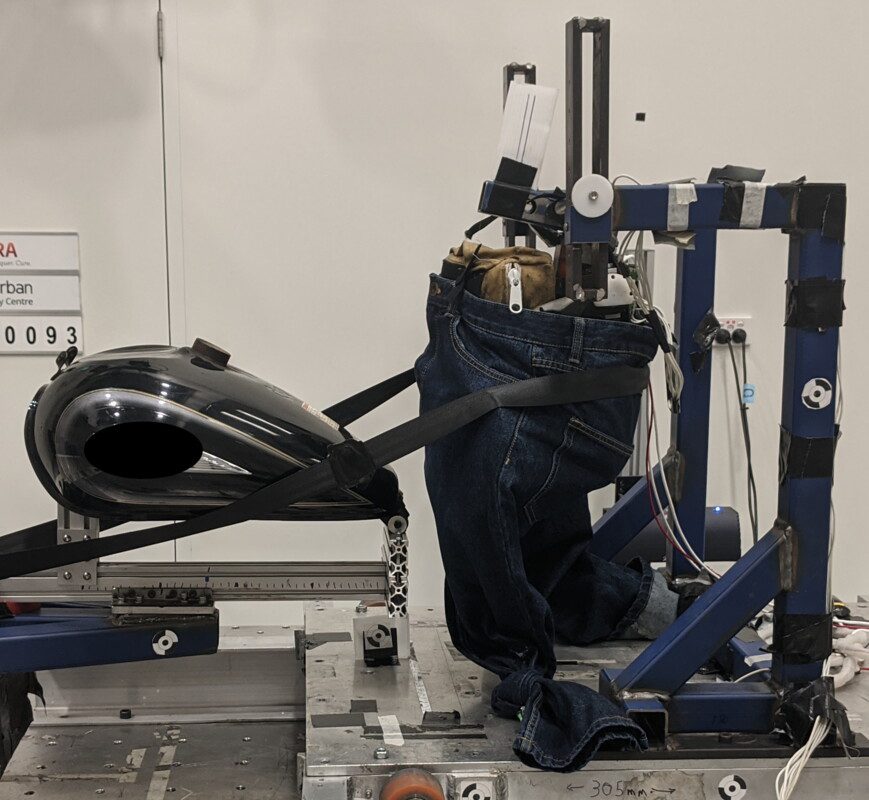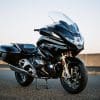The shape of your motorcycle could have a big impact on rider injury in a crash, a landmark Australian study with simulated lab crash test equipment has found.
Tanks with a sharp rise from the seat can increase the risk of pelvic injury, according to the study by Neuroscience Research Australia (NeuRA), an independent, not-for-profit research institute based in Sydney, previously known as the Prince of Wales Medical Research Institute.
The brain and nervous system research centre conducted a three-year in-depth investigation of motorcycle crashes which has led to several other research projects, including the tank study which included simulated lab crash tests with various tank shapes.
This is the first time the interaction between the pelvis and the design of fuel tanks has been studied in this way due to a newly developed test method for physically recreating rider pelvis impacts in simulated crash tests.
“Our crash studies have confirmed previous findings related to the frequency with which the motorcycle fuel tank is a source of groin and pelvic injury demonstrating that there has been little improvement in the crashworthiness over the last few decades,” the study found.
Researchers found that fuel tanks with a lower angle or more gradual rise from the front of the seat to the handlebars were safer and less likely to cause a pelvic injury to the rider during an accident.
They identified that motorcyclists with a more upright posture, such as those riding cruiser bikes, had an increased likelihood of hitting the fuel tank with greater force than those riding bikes where they have a forward-leaning position in the seat such as sports bikes.
About 15% of injuries involving motorcyclists are pelvic injuries, says Dr Tom Whyte, an injury biomechanics engineer and researcher at NeuRA.
Pelvic injuries from motorcycle crashes can be permanent and result in difficulties with basic activities such as walking, sexual function, or urinating.
They typically occur when the motorbike makes a front-on impact with another vehicle or object and the rider hurtles over the tank and bars.
“In the simulated crash tests, we found differences in fuel tank shape influence the severity of the impact to the pelvis, with fuel tanks rising steeply and abruptly from the bike seat increasing the possibility of injury,” Dr Whyte says.
“There’s likely to be greater protection for a motorcyclist’s pelvis when they are leaning forward. This is because our tests found that there are smaller impact forces between the pelvis and the fuel tank when riders are in this position,” Dr Whyte says.
“The findings show that greater attention to the design of fuel tanks could improve the safety of motorcyclists particularly on motorcycles where riders are more likely to take an upright position while riding,” he said.
The findings are being presented to manufacturers in the hope they will consider them in their bike designs.



